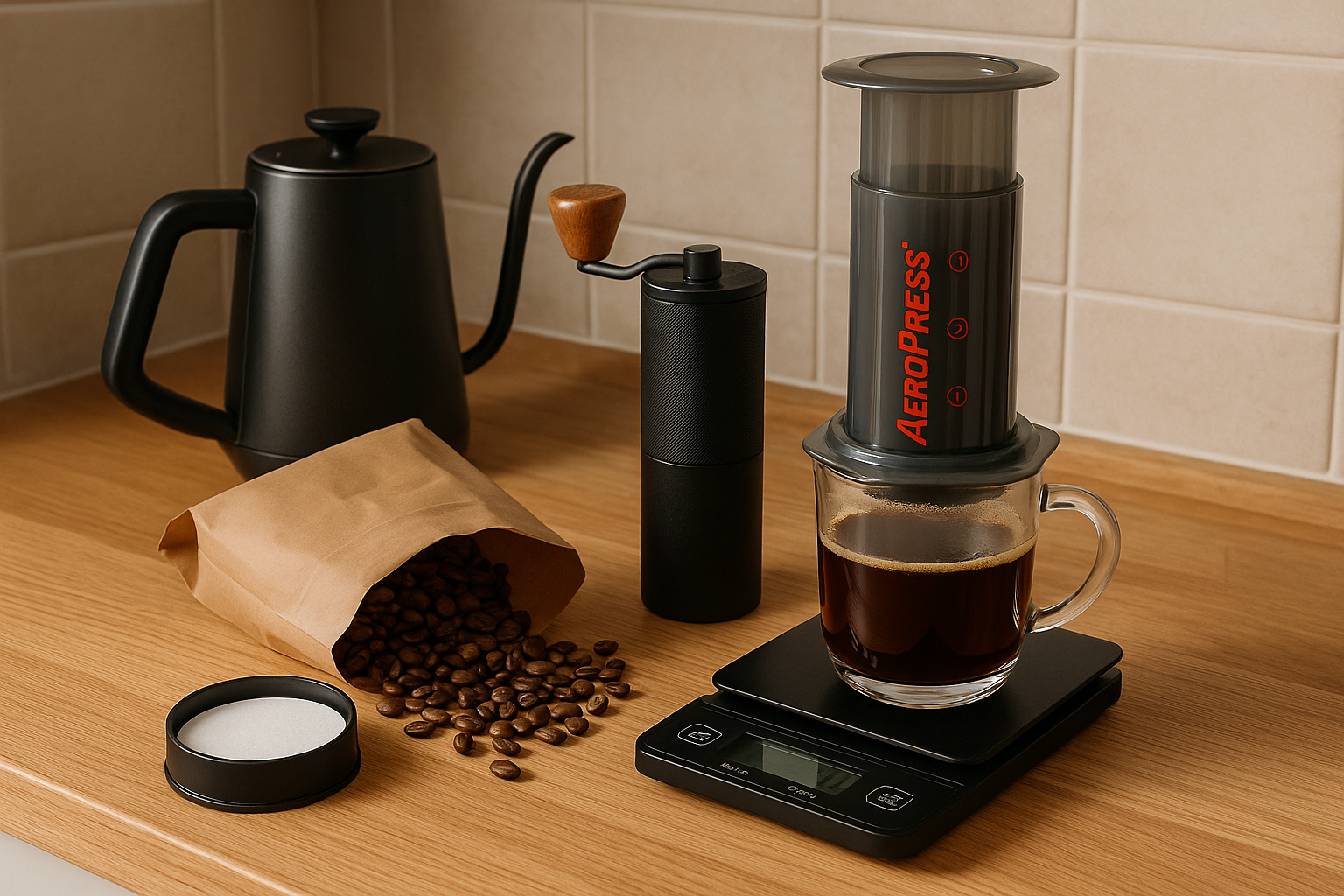Dreaming of becoming a skilled barista doesn’t have to start at an expensive coffee shop. With the right tools, techniques, and a bit of passion, you can build a solid home barista setup without spending a fortune. In this guide, you’ll discover how to create your own coffee haven at home — even on a tight budget.
Why Build a Home Barista Setup?
There are plenty of reasons to invest in a home setup:
- Save money over time by skipping the café
- Practice barista skills at your own pace
- Customize every part of the brewing process
- Impress friends and family with café-quality drinks
But the best reason? You get full control of your coffee experience.
How Much Should You Spend?
You don’t need to spend thousands to get started. A quality budget setup can cost between $150 and $400, depending on how deep you want to go. You can also build your kit gradually by starting with the essentials.
Let’s break down the most important components.
1. The Coffee Grinder
Why it matters: The grinder affects flavor more than most people realize. A consistent grind size is key for balanced extraction.
Budget Options:
- Manual burr grinders (like Hario Skerton or Timemore Chestnut): ~$40–$70
- Entry-level electric burr grinders (like Baratza Encore or Bodum Bistro): ~$90–$150
Avoid blade grinders — they create uneven grinds and weak brews.
2. The Brewer
Depending on the kind of coffee you like, choose one of these budget-friendly brewers:
- French Press: Rich, full-bodied coffee. ~$15–$30
- Pour Over (Hario V60 or Kalita Wave): Clean, complex brews. ~$15–$25
- AeroPress: Great for travel and experimentation. ~$30–$40
- Moka Pot: Espresso-like brew without the machine. ~$25–$40
You don’t need an espresso machine to make amazing coffee at home.
3. The Scale
Measuring coffee and water by weight is crucial for repeatability. Look for:
- Digital scale with 0.1g precision
- Optional: built-in timer
Budget Pick:
- Hario Drip Scale or Fuzion Digital Scale: ~$10–$25
4. Kettle
If you’re using a pour-over, you’ll want a gooseneck kettle for precision. But for basic brewing:
- Standard electric kettle: ~$15–$30
- Gooseneck manual kettle (e.g. Hario or Bonavita): ~$25–$40
No need for expensive temperature control — just let boiling water cool for 30 seconds.
5. Filters and Accessories
- Paper filters for pour-over or AeroPress: ~$5 for 100-count
- Coffee storage container (airtight, opaque): ~$10
- Cleaning brush or cloths: ~$5
Keep things simple and clean. Accessories should serve a purpose, not clutter your space.
6. Choosing the Right Coffee Beans
Always buy fresh, whole beans from local roasters or reputable brands. Aim for:
- Roasted within the last 2–4 weeks
- Medium roasts (best for learning flavor balance)
- Try small 250g or 500g bags to explore different origins
Good beans will make even a cheap setup taste incredible.
Sample Budget Setup (Under $200)
| Item | Product | Approx. Cost |
|---|---|---|
| Grinder | Timemore Manual Grinder | $50 |
| Brewer | AeroPress | $35 |
| Scale | Fuzion Digital Scale | $15 |
| Kettle | Basic Electric Kettle | $20 |
| Filters | AeroPress Filters | $5 |
| Coffee Beans | Local Medium Roast | $15 |
| Airtight Storage | OXO Container | $10 |
| Total | $150 |
This minimalist setup will outperform most store-bought coffee if used right.
Tips to Save Even More
- Buy second-hand gear: Sites like eBay or Facebook Marketplace often have great deals.
- Bundle purchases: Some brands offer starter kits at a discount.
- Skip unnecessary gadgets: No need for milk frothers or temperature readers in the beginning.
Focus on learning extraction and flavor profiles first.
Getting the Most from Your Setup
Even with budget tools, you can brew like a pro if you:
- Use the correct water temperature (92–96°C / 195–205°F)
- Stick to a brew ratio (e.g., 1:15 coffee-to-water)
- Grind fresh right before brewing
- Clean your gear regularly
- Experiment with brew time and grind size
Every cup you make is an opportunity to improve your palate and technique.
The Affordable Path to Barista Skills
Being a barista doesn’t require an expensive espresso machine or commercial setup. With some strategic purchases and a commitment to learning, you can turn your kitchen into a personal café. A budget home barista setup is not just about saving money — it’s about building skill, developing taste, and enjoying coffee on your own terms.
Start small, stay consistent, and you’ll be surprised how fast your barista abilities grow.
